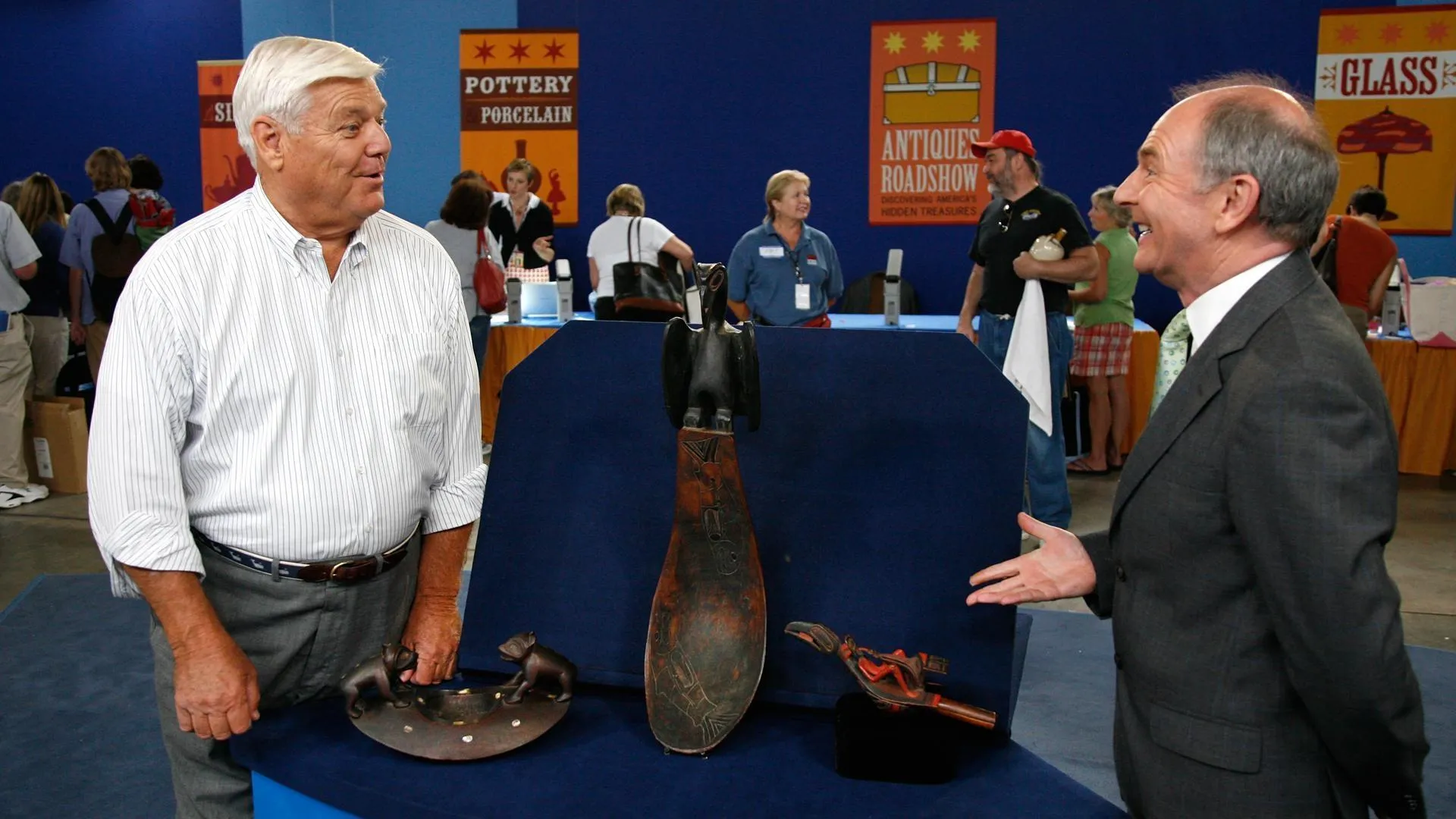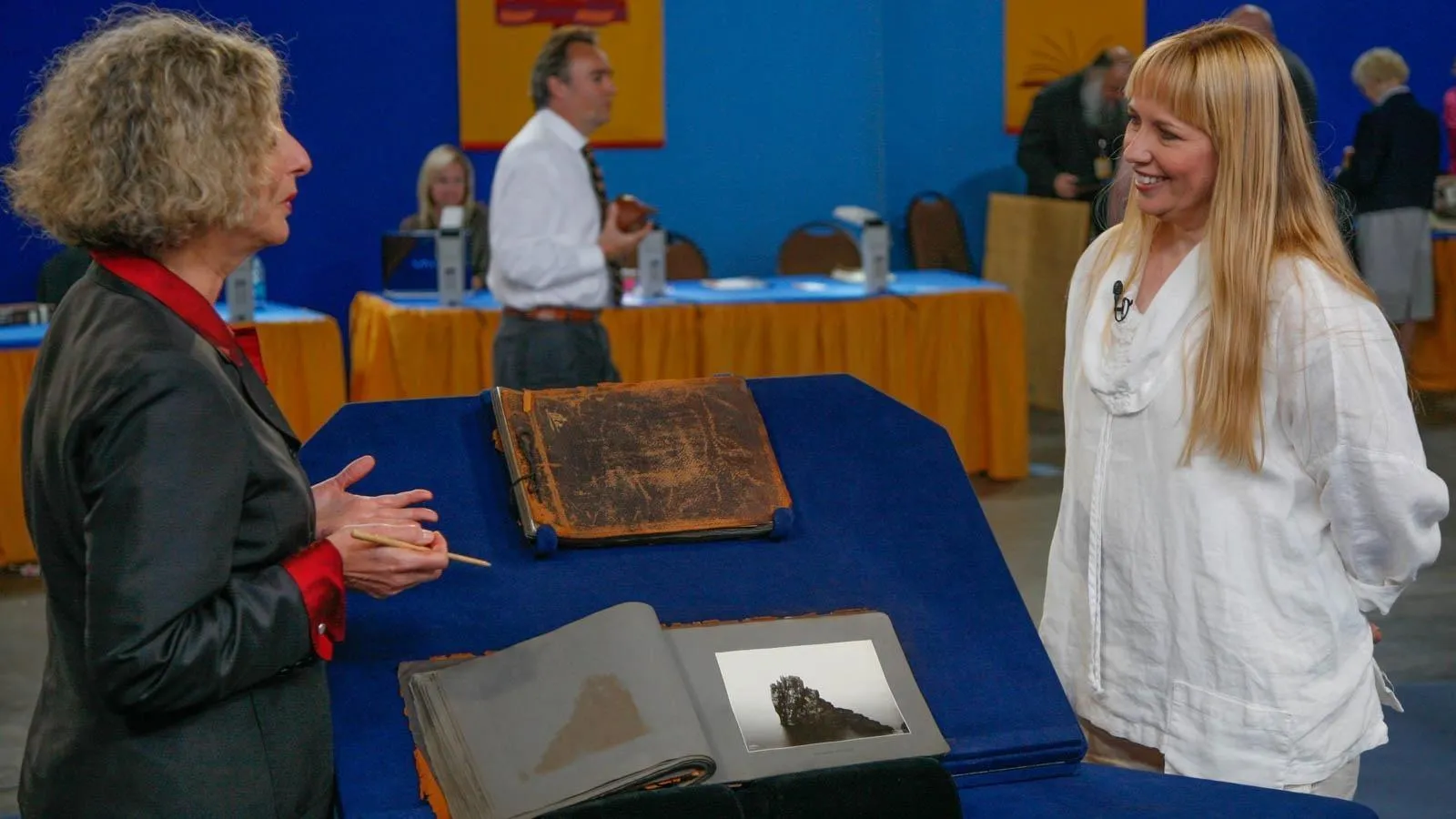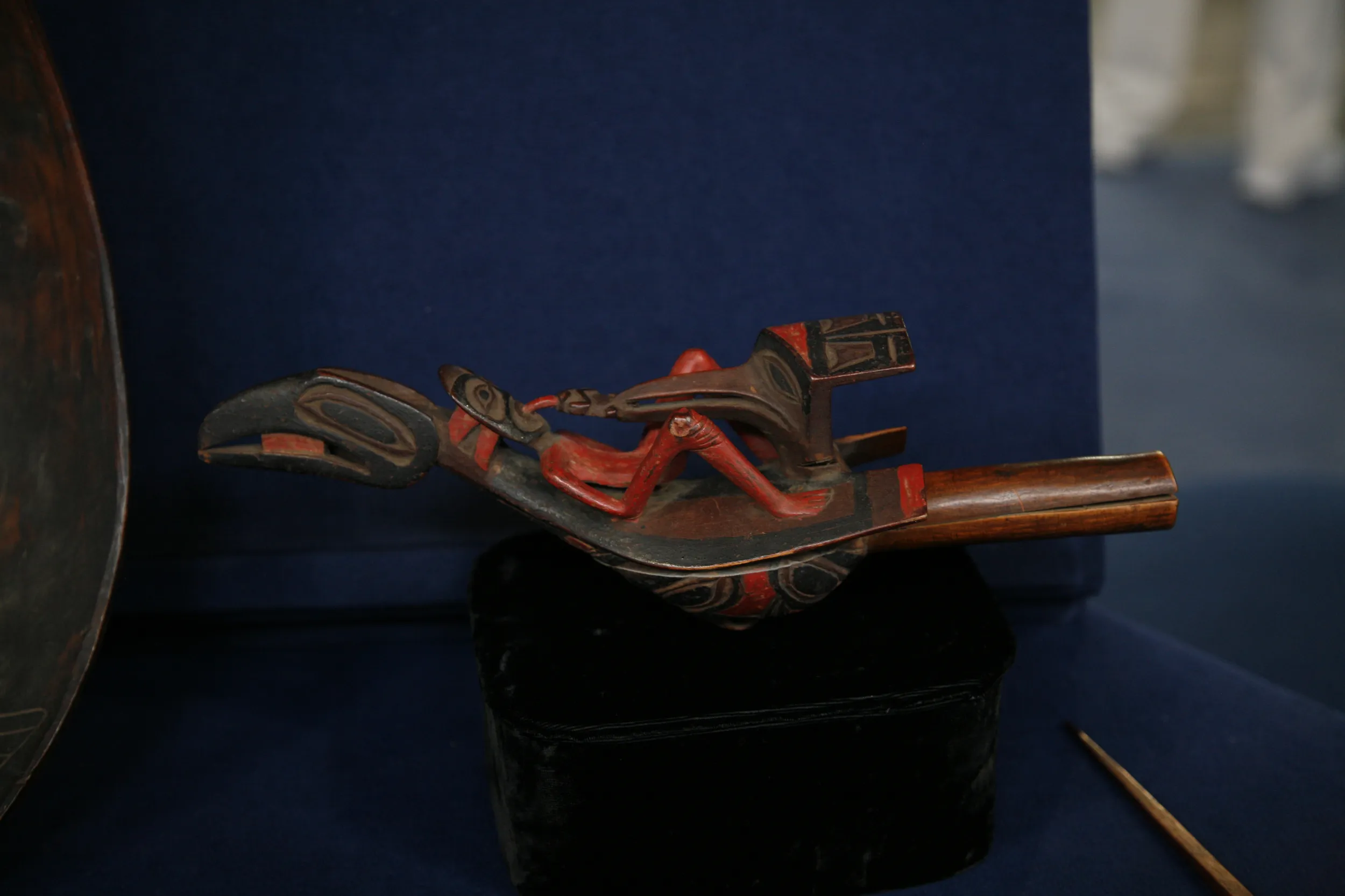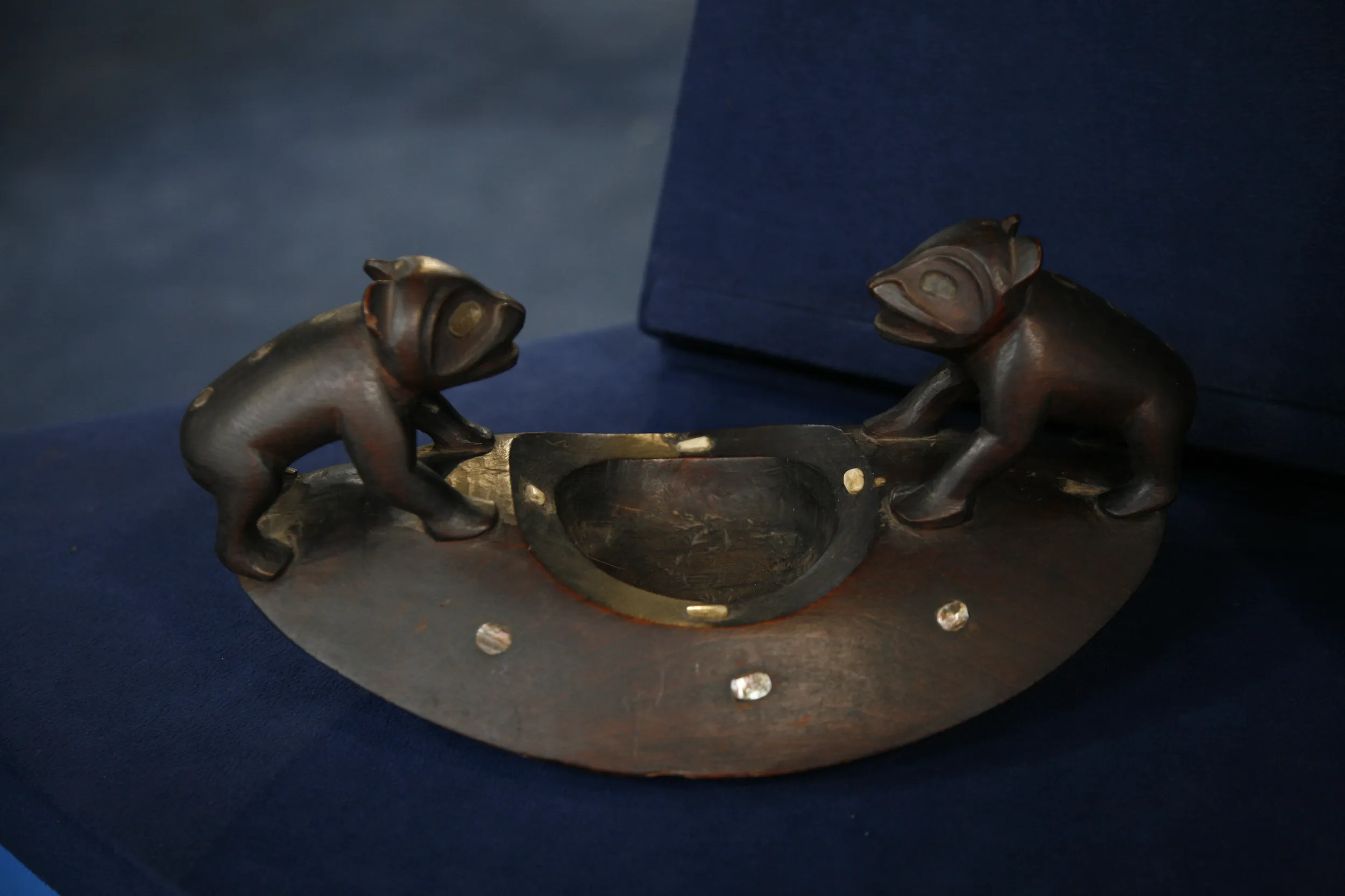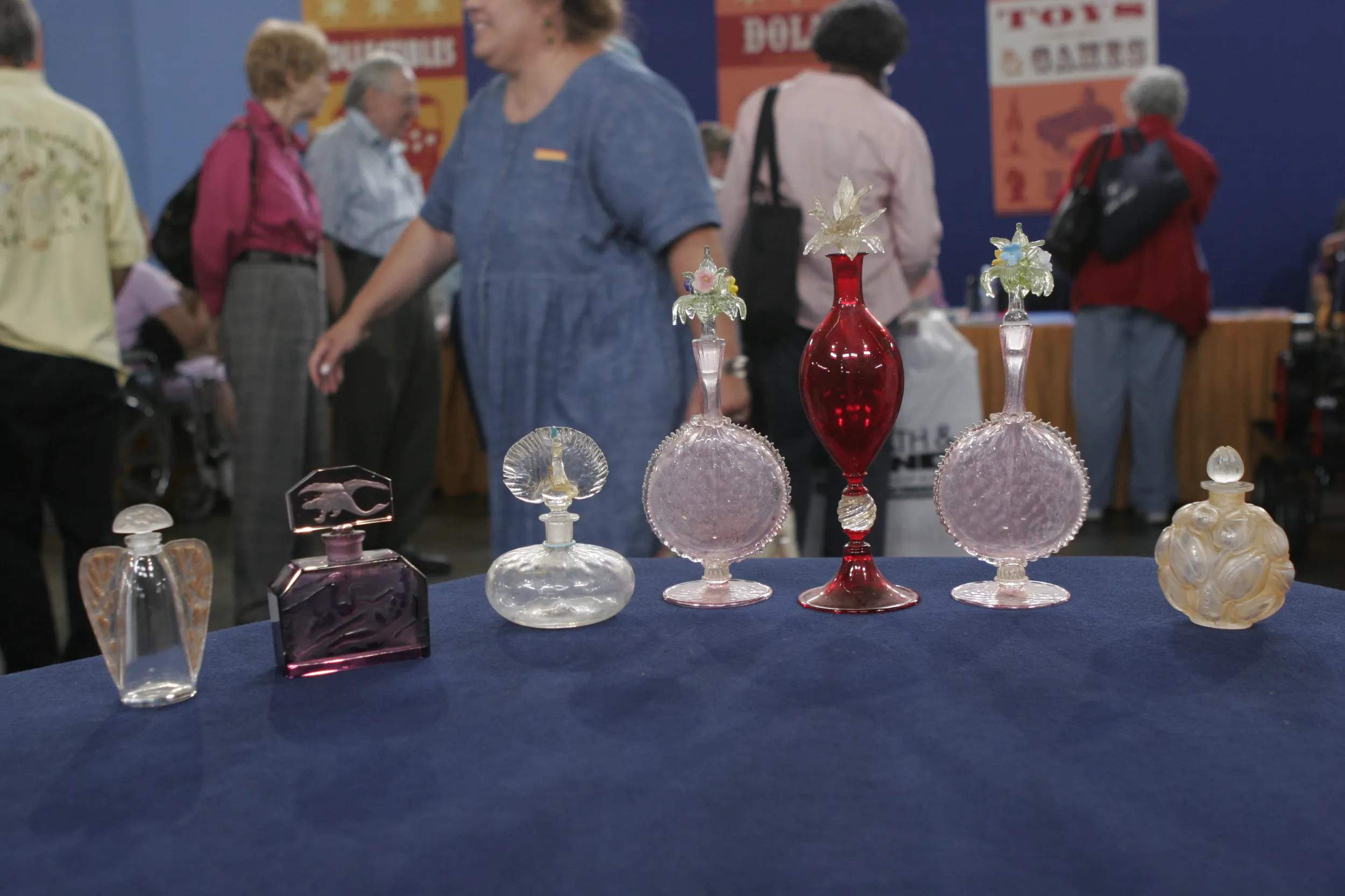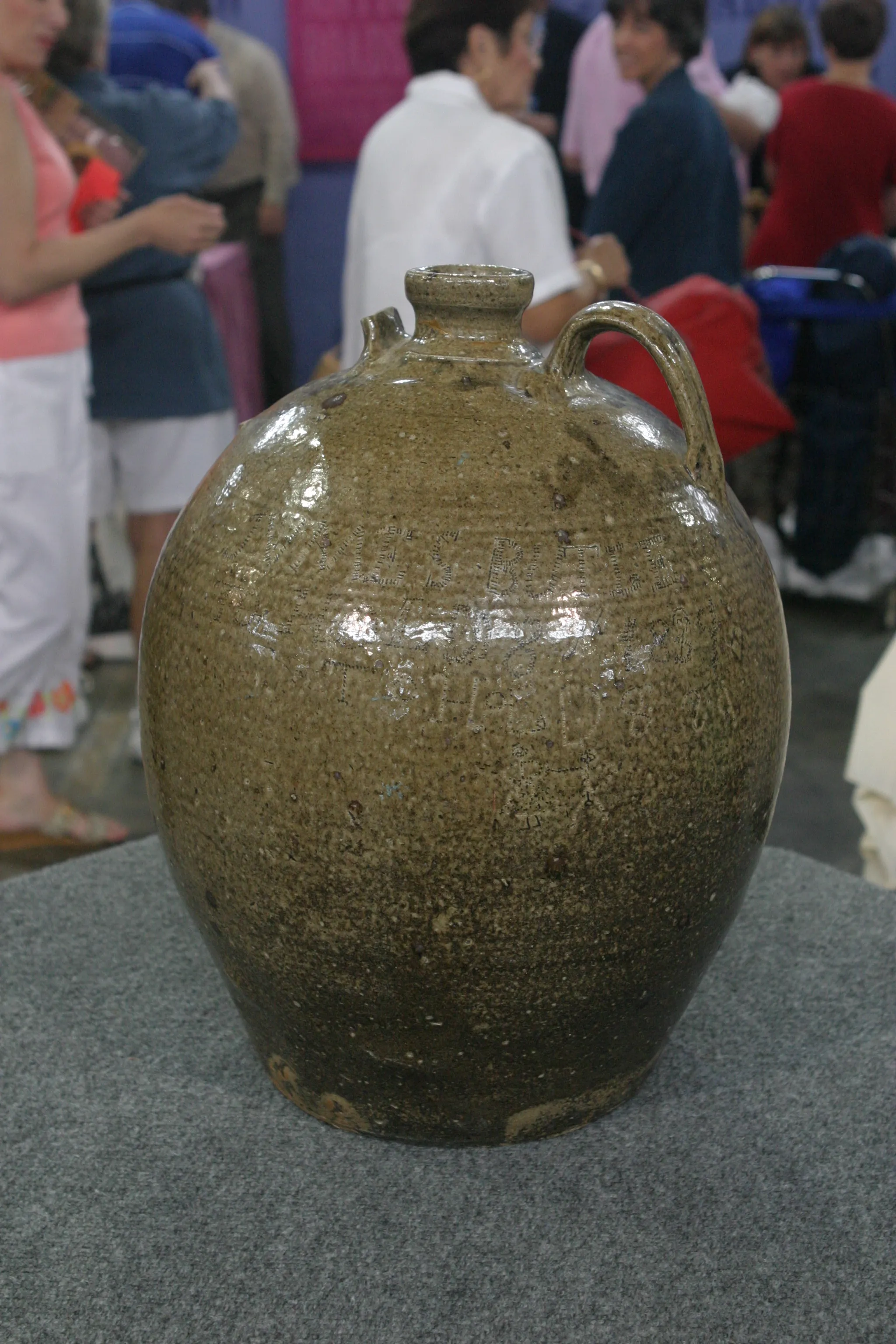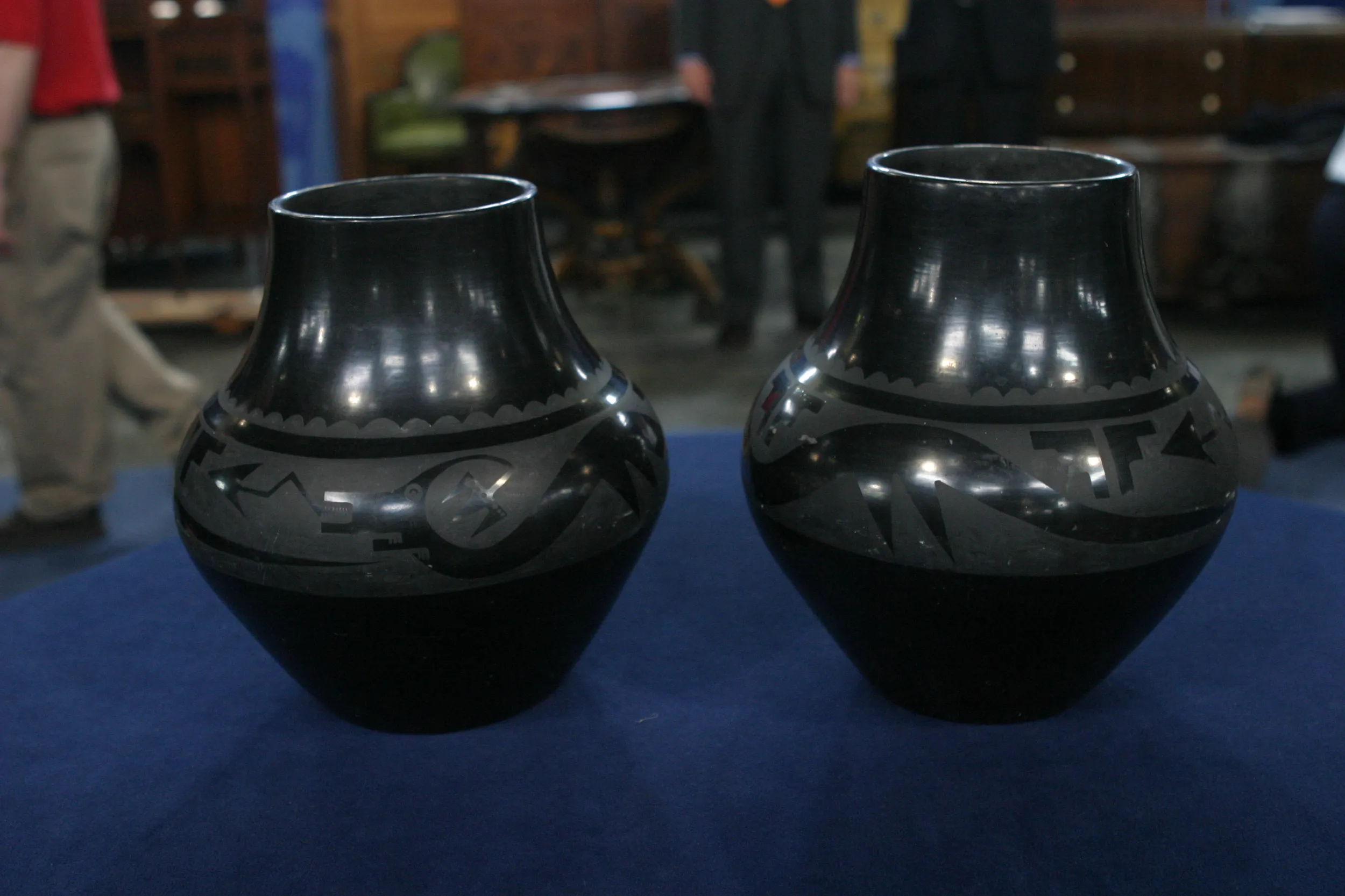GUEST: These were my grandfather's. I've had them since my mother passed away. He was a scenic designer of Broadway scenery in Manhattan and did numerous Broadway shows. And... but he was a world traveler-- Alaska, Africa, uh, all of Europe. And these were some items that he brought back from Alaska. He got them in 1908 to 1910. He was trying to pick up ideas for different types of scenery art that he might use in, in a particular show that had something to do with Alaska.
APPRAISER: Do you know what they are at all?
GUEST: I don't have the slightest idea.
APPRAISER: Oh, really?
GUEST: I've had them, personally, for the last 45 years, probably, and they've been in a box in the back of my closet.
APPRAISER: Well, they're all from the Northwest coast, and they've all from, really, the same area, where the Tlingit are. I think the bowl might be Haida. And these two pieces, this one for sure is Tlingit. The ladle, I'm not quite so sure where it's from. It's probably, again, Haida or Tlingit. The bowl is based on a, a grease dish. They had a big tradition of doing oil bowls. This is probably late 19th century. And we're starting to look at bowls here also being made for trade, not just for use. So this isn't strictly a bowl that was ever used, probably, by the tribe. It's probably made out of cedar and you can see that it has some abalone inlays on the outside.
GUEST: Yeah.
APPRAISER: And some bone inlays on the inside. But what you've still got is wonderful animation of the bears on the outside. In the middle we have a feast ladle. And this also is the same period. It's really getting toward the end of the 19th century. But the real ones they used were actually this size as well. They were really quite enormous. This is already losing a little of the refinement, but still very impressive. And it's interesting that the items that people would start to carve for tourists were fairly iconic items that they used in the tribal use, like the big feast ladle. This is really the pièce de résistance. This is a rattle. It's made probably of maple, because it's a close-grained wood that allows you to do this terrific carving. And it shows the shaman on the back of a raven, all very important shamanistic icons in Tlingit folklore. And here you see the transference of the spirit from the tongue to the mouth. And this is a kingfisher here holding a frog going into the shaman's mouth. This is probably the second or the third quarter of the 19th century-- obviously been used, got wonderful wear on the handle.
GUEST: Mm-hmm.
APPRAISER: It's a super bit of carving. The bowl, at auction, I would be very comfortable estimating that at $8,000 to $12,000.
GUEST: My gosh.
APPRAISER: Oh, it's a super bowl. It's really wonderful.
GUEST: Really?
APPRAISER: The ladle, I think, again, very comfortably, $4,000 to $6,000.
GUEST: Good heavens.
APPRAISER: Okay? I'm saving this one to the last.
GUEST: Okay.
APPRAISER: I think it's really super. I would be, again, very comfortable, at auction, estimating this at $40,000 to $60,000.
GUEST: You've got to be kidding me.
APPRAISER: And I think that's pretty conservative.
GUEST: Really?
APPRAISER: I think, you know, with all the conditions and everything lined up, I think you might even double this.
GUEST: Really?
APPRAISER: It's a really super example. And Northwest coast, out of all the American Indian art that's out there, is continuing to be very, very strong in the market; it's very, very desirable. And the rattle particularly so.
GUEST: I had... I'm dumbfounded, I had no idea. (chuckles)

